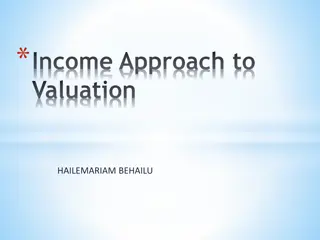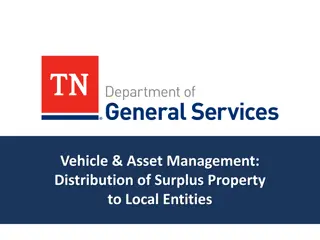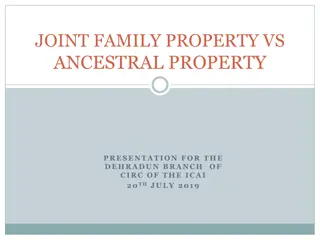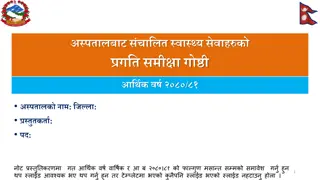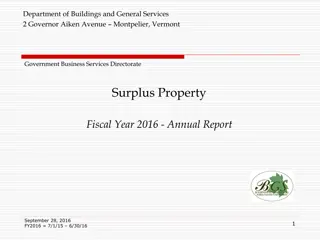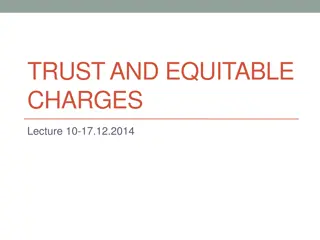Property, Plants and Equipment
Property, plant, and equipment are tangible assets used for production, rental, or administrative purposes. Depreciation, cost, residual value, and useful life are key concepts associated with these assets. Measurement at recognition and examples of directly attributable costs are also discussed.
Download Presentation

Please find below an Image/Link to download the presentation.
The content on the website is provided AS IS for your information and personal use only. It may not be sold, licensed, or shared on other websites without obtaining consent from the author.If you encounter any issues during the download, it is possible that the publisher has removed the file from their server.
You are allowed to download the files provided on this website for personal or commercial use, subject to the condition that they are used lawfully. All files are the property of their respective owners.
The content on the website is provided AS IS for your information and personal use only. It may not be sold, licensed, or shared on other websites without obtaining consent from the author.
E N D
Presentation Transcript
Property, Plants and Equipment Rangajewa Herath B.Sc. Accountancy and Financial Management(Sp.)(USJ) MBA-PIM(USJ)
Property, plant and Equipments Property, plant and equipment are tangible items that: (a) are held for use in the production or supply of goods or services, for rental to others, or for administrative purposes; and (b) are expected to be used during more than one period.
Depreciation is the systematic allocation of the depreciable amount of an asset over its useful life. Depreciable amount is the cost of an asset, or other amount substituted for cost, less its residual value.
Cost is the amount of cash or cash equivalents paid or the fair value of the other consideration given to acquire an asset at the time of its acquisition or construction or, where applicable, the amount attributed to that asset when initially recognized in accordance with the specific requirements of other Standards.
Residual value of an asset is the estimated amount that an entity would currently obtain from disposal of the asset, after deducting the estimated costs of disposal, if the asset were already of the age and in the condition expected at the end of its useful life.
Useful life is: (a) the period over which an asset is expected to be available for use by an entity; or (b) the number of production or similar units expected to be obtained from the asset by an entity.
Measurement at Recognition An item of property, plant and equipment that qualifies for recognition as an asset shall be measured at its cost.
Examples of directly attributable costs are: a) Costs of employee benefits arising directly from the construction or acquisition of the item of property, plant and equipment; (b) Cost of site preparation; (c) Initial delivery and handling costs; (d) Installation and assembly costs; (e) Costs of testing whether the asset is functioning properly, after deducting the net proceeds from selling any items produced while bringing the asset to that location and condition (such as samples produced when testing
Exercise 1 A manufacturing factory. Purchase price of the machine is Rs.1,500,000 and 5% trade discount was received from the buyer. Fright and insurance cost of bring the machine to Sri Lanka was Rs.450,000. Import duties and other taxes paid at the port was Rs.350,000. Local transport cost of Rs.50,000 was incurred to bring the plant to the factory. Rs.5,000 wages for laborers and Rs.15,000 professional fee for engineer was paid the installation of the plant Fire insurance business imported a plant for its
Measurement after Recognition Cost Model After recognition as an asset, an item of property, plant and equipment shall be carried at its cost less any accumulated depreciation. Revaluation Model After recognition as an asset, an item of property, plant and equipment whose fair value can be measured reliably shall be carried at a revalued amount, being its fair value at the date
Results of Revaluation Revalued Amount > Carrying Amount = Revaluation Surplus Revalued Amount < Carrying Amount = Revaluation Deficit
Exercise 2 The following balances were extracted from ABC PLC. as at 31.03.2015. Land 600,000 Buildings 400,000 Motor vehicles 800,000 Cost - 100,000 Acc. Depn. 250,000 These assets were revalued as follows Land 750,000 Buildings - 450,000 MV- 425,000 Required: Prepare the necessary accounts to record the revelation and show income statement and statement of financial position extracts.
Exercise 3 A business purchased a plant for Rs.3,000,000 on 01.04.2012 and estimated a useful life of 8 years with a residual value of Rs.600,000. On 01.04.2014 this plant Rs.2,520,000. was revalued for Required: Prepare the necessary ledger accounts for from 2010/11 to 2014/15.
Revaluation of Revalued PPE First Time Second Time Accounting Treatment Recognized under Other Comprehensive Income and Accumulated in Revaluation Reserve Surplus Surplus Recognized as an expense in the Profit/ (loss) Deficit Deficit Reverse the previously recognized Surplus. Any excess over it , Recognized as an expense in the Profit/ (loss) Surplus Deficit Reverse the previously recognized Surplus. Any excess over it , under Other Comprehensive Income and Accumulated in Revaluation Reserve Deficit Surplus
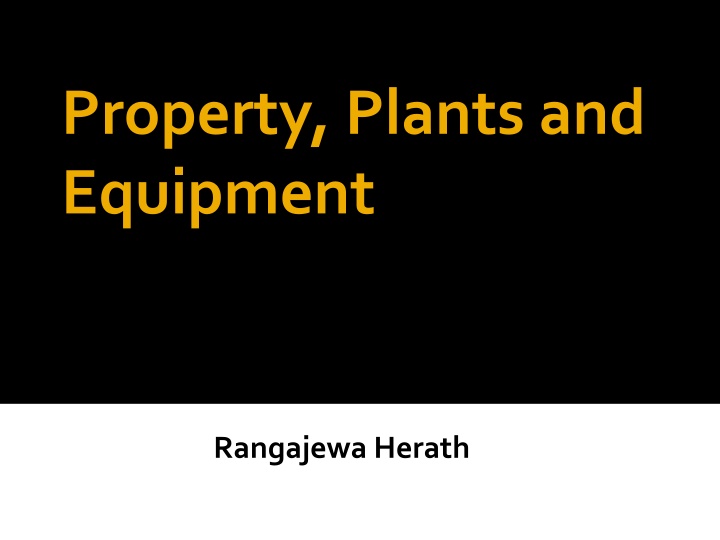


![Property Settlements in Family Law: Case Study of Stamatou & Stamatou [2022] FedCFamC1F 241](/thumb/63303/property-settlements-in-family-law-case-study-of-stamatou-stamatou-2022-fedcfamc1f-241.jpg)

